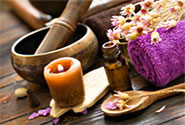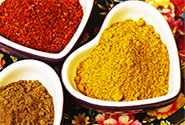Skin care in winter
"I come from a family of hereditary doctors, I have never known any other profession. I was very inspired by the example of my father, whose example has been in front of my eyes since childhood. I like this job, it gives satisfaction"
Why is it necessary to build body skin care in a special way in winter? What are the reasons from the point of view of Ayurveda?
According to Ayurvedic teachings, each season is characterized by a special ratio of elements, which undoubtedly affects our body. In winter, the Vata dosha increases. Vata dosha is dry, light, cold, rough and thin, when it increases, the same unpleasant changes are observed in the body: the skin becomes dry and rough, prone to redness and peeling, which is why special care is required in winter.
What is the fundamental difference between winter body care? What do you need in addition to winter care? How to eat in winter?
In winter, the fire of digestion (Agni) is more active. In Ayurveda, it is considered that when there is a lack of food, Agni begins to absorb the tissues of the body itself. Thus, in winter, you should eat more sweet, sour and salty foods. Also, the winter diet should include more fatty foods – to reduce the level of cotton wool in the body. Various hot soups are ideal, the use of barley, wheat, peas is also recommended. In winter, include more dairy products in your diet. Avoid cold food and dry food. The winter diet can contribute to weight gain, therefore, in order to compensate for such a nutritious diet, good physical activity is necessary at this time.
Body. What problems are there in winter and how to cope with it? What home remedies can I use? Is it worth taking home spa baths and wraps in winter? What recipes can I recommend here?
In winter, due to the increase in Cotton wool, the skin becomes dry, in addition, cracks may appear on different parts of the skin. The condition of the hair may also worsen. There is a feeling of deterioration in health in general, this time of year is often accompanied by a bad mood. Some skin diseases, such as neurodermatitis, may worsen. To eliminate these phenomena, in addition to adjusting the diet and daily routine, Ayurveda recommends oil massages and steam treatments.
Coconut and sesame oils are good for moisturizing and softening the skin. In winter, steam treatments are recommended, for example, a sauna. Ayurveda experts also recommend oil massage of SOMA (Abyanga) and Indian herbal steaming of Svedan. To eliminate dryness, it is useful to apply a paste of milk and ground mash to the body. In India, a little turmeric is also added to this mixture. A paste made from sandalwood powder mixed with milk is also used, and it is very good to apply a "mask" of cucumber juice on the face. In addition, you can use moisturizers with different oils (saffron, almond oil, wheat, sandalwood, aloe vera, etc.) Internal oiling (ingestion of Ghee ghee) and external oiling will help to support immunity in winter. It is useful to do spa treatments and wraps at home.
For wrapping at home, a mixture of white clay and milk is good. Also, the condition will help improve the skin with a mixture of ground sesame and honey. Ayurvedic clinics offer a procedure called MASUP – body massage with soft, fragrant powders-powders that soften subcutaneous fat, make the skin elastic. During this massage, dead skin cells are exfoliated. At home, you can also do such a massage using a mixture of ground mash, lentils, cinnamon and turmeric. It is useful to apply aloe juice to the skin. In winter, it is important to properly care for your hair. Before shampooing, to prevent dandruff and hair loss, as well as for their shine, you can apply a mixture of coconut oil containing bringaraj (Eclipta Alba plant).
Hands. What creams should I use at night and how should I accompany their use? Or maybe it's better to take not a cream, but some kind of homemade remedy? Maybe oil compresses? How often to do hand peeling and masks. What home recipes can be used for this? What kind of hand baths can be made at home?
Before bathing, apply a mixture of sesame and coconut oils on your hands. It is best to do this after a steam bath for hands. To prevent the skin from drying out, do not forget to apply moisturizers containing almonds, vetiver, jasmine, marine components, etc. after a hot bath. Never wash your hands with soap containing strong chemicals, use soft neutral soaps or mix them with a mixture of chickpea powder and milk. Hand care is just as important as facial care. An increase in cotton wool can also cause deterioration of the nails, so in addition to a diet and a regime that reduces Cotton wool, regularly take care of your nails.
Legs. What problems are there with legs in winter and how to cope with it? How to build a foot care program in winter? In what order and what should I do? What home remedies can I use?
The main complaints about the condition of the legs relate to cracks on the soles and feet, especially on the heels, which is also due to an increase in cotton wool. Dip your feet into hot water and carefully remove dead skin, then apply creams containing a mixture of ghee and vegetable oils (including coconut). In some cases, it may be necessary to apply animal fats. It is necessary to remove dead tissue daily with a brush, wiping with lemon will also soften the skin. It is recommended to perform various exercises for the legs to improve blood circulation in them. And, of course, keep your feet warm in winter.
Specialists of the Center
-
 Shiva
"My task is to do my best and to achieve the perfection in yoga. I believe that studying yoga is an endless process. I want to use the acquired knowledge and experience in yoga to help people who lead healthy and active lifestyle"
Shiva
"My task is to do my best and to achieve the perfection in yoga. I believe that studying yoga is an endless process. I want to use the acquired knowledge and experience in yoga to help people who lead healthy and active lifestyle"
-
 Jithin Ram
Doctor of Medical Sciences and expert in the field of complex cleansing of the body, panchakarma. The doctor has more than 11 years of work experience both at home and abroad.
Jithin Ram
Doctor of Medical Sciences and expert in the field of complex cleansing of the body, panchakarma. The doctor has more than 11 years of work experience both at home and abroad.
-
 Neil Venugopal
Dr. Neil has a perfect knowledge of the marmae – points of life on the human body, as well as methods of influencing them to achieve full recovery from a variety of ailments.
Neil Venugopal
Dr. Neil has a perfect knowledge of the marmae – points of life on the human body, as well as methods of influencing them to achieve full recovery from a variety of ailments.
-
 Gangeyan
“I like my job. In several years I am planning to open a yoga studio in my hometown”
Gangeyan
“I like my job. In several years I am planning to open a yoga studio in my hometown”
-
 Mohammedali Palasseri
“I came from hereditary doctors’ family, and I’ve never known any other profession. I followed my father’s example since I was a child. I like my job, it really satisfies me”.
Mohammedali Palasseri
“I came from hereditary doctors’ family, and I’ve never known any other profession. I followed my father’s example since I was a child. I like my job, it really satisfies me”.




